
A single EuroSprinter locomotive leads a train of empty containers north across the eight arches of Adlitzgraben Viaduct near Wolfsbergkogel Station.
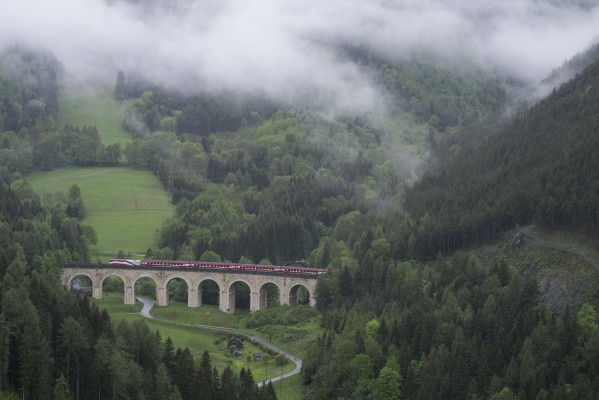
A RailJet passenger train for Graz crosses Adlitzgraben Viaduct on a misty May morning.
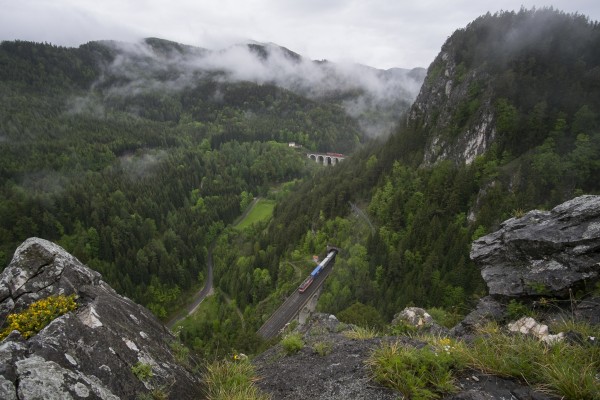
A long container train with three locomotives stretches across Kalte Rinne and Krauselklause viaducts at Breitenstein on a misty May morning.
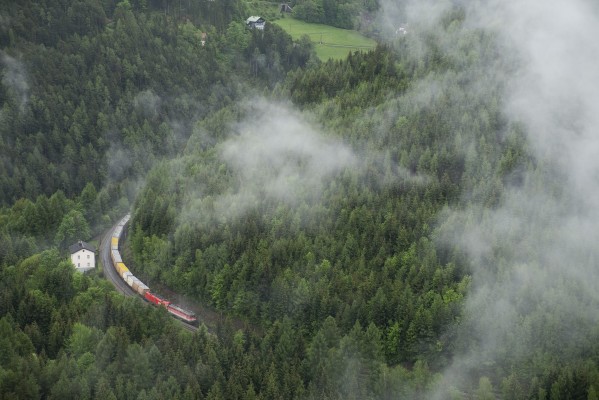
A northbound empty container train rolls downgrade past a lineman’s house toward Kalte Rinne Viaduct.

A pair of light helpers hustle north over Kalte Rinne Viaduct.
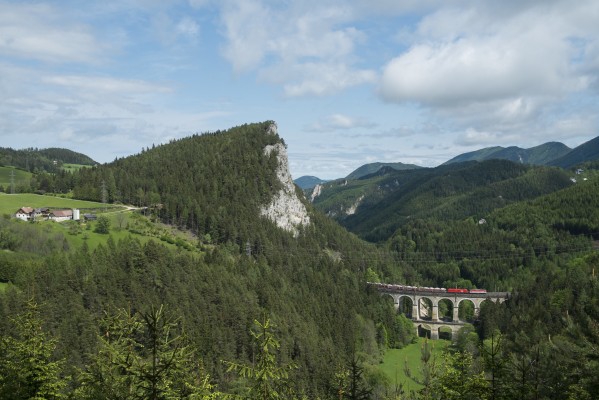
After a morning of showers and mist, the afternoon sun bathes Kalte Rinne Viaduct and the Polleroswand as a southward freight train of new automobiles heads upgrade with a Class 1142 headend helper leading a EuroSprinter locomotive.
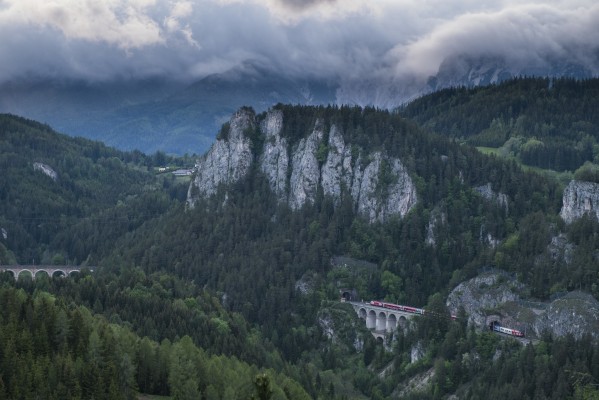
As twilight falls on the 20-Schilling View, a northbound Railjet passenger train rolls downgrade across Krauselklause Viaduct.
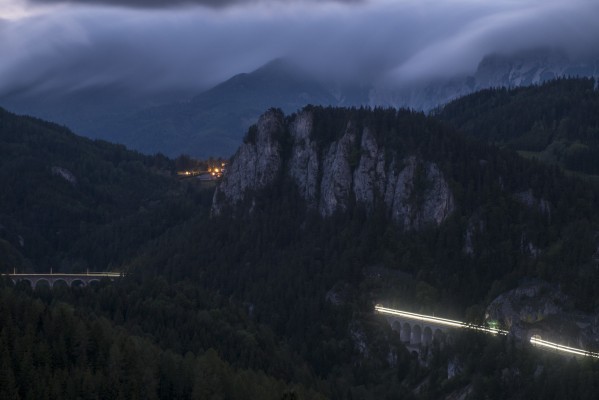
As night descends on the 20-Schilling View, a northbound freight train paints a trail of lights across Kalte Rinne and Krauselklause viaducts at Breitenstein.
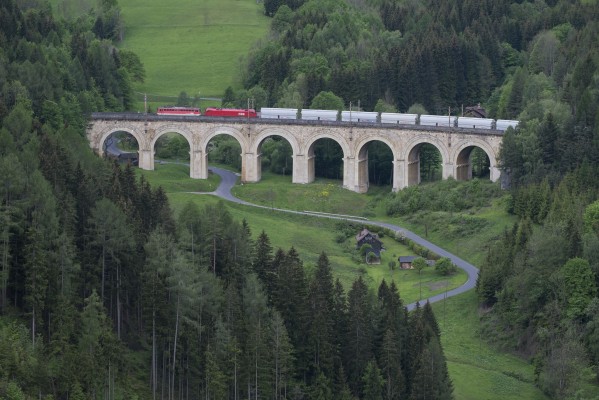
Freight rolls south over Adlitzgraben Viaduct behind a Class 1142 headend helper and a EuroSprinter.
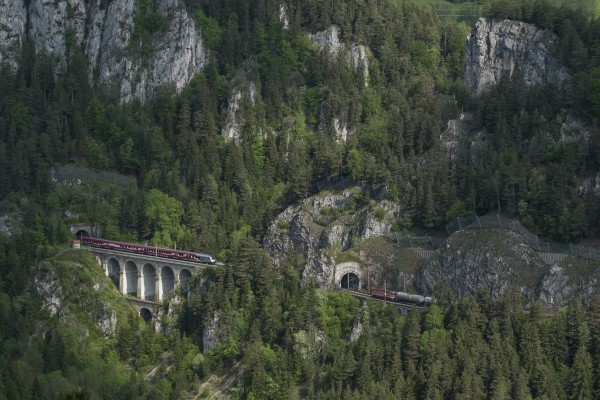
46-foot Krauselklause Tunnel separates a northbound Railjet on Krauselklause Viaduct and a short southbound freight led by a single Class 1144 in May 2016.
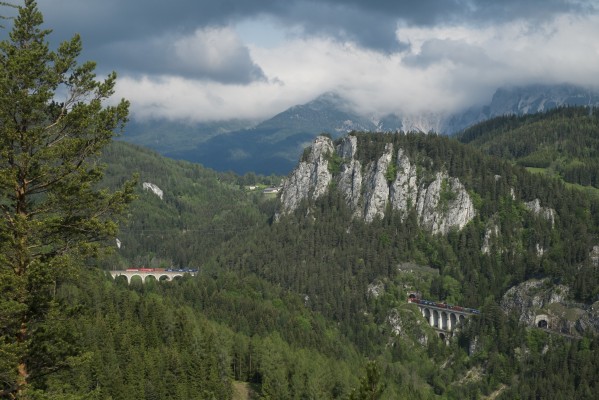
Austria's "20-Schilling view." The rocky face of the Polleroswand dominates this scene at Breitenstein, below which sits the most remarkable stretch of the Semmering Railway. At lower right is the Krauselklause Tunnel and Viaduct, with the upper level of the Kalte Rinne Viaduct visible at left, separated by the Polleroswand Tunnel. A northbound intermodal freight train stretches across both bridges and tunnels. Austria's 20 Schilling banknote from 1967 featured this scene. Today a hiking trail and a lookout tower provide easy access to this famous vantage.
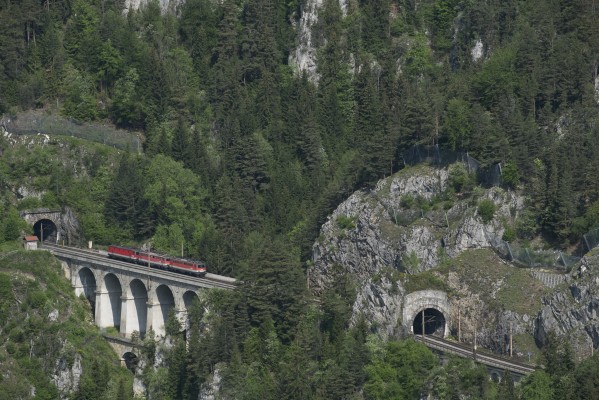
A set of three light helpers—two Class 1142s and one 1144, head north across Krauselklause Viaduct on their way back to Gloggnitz to assist more southbound freights.
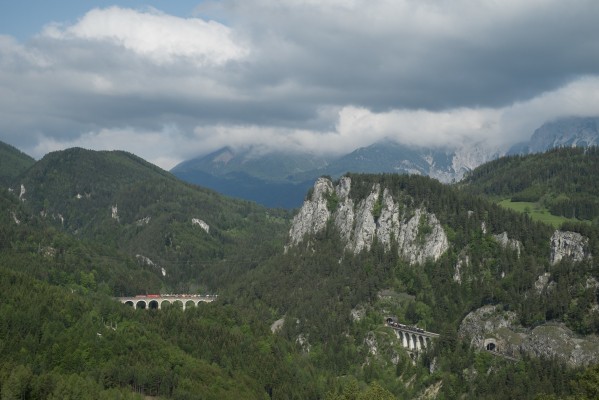
A train of new cars rolls over Kalte Rinne Viaduct on a beautiful late-spring morning.
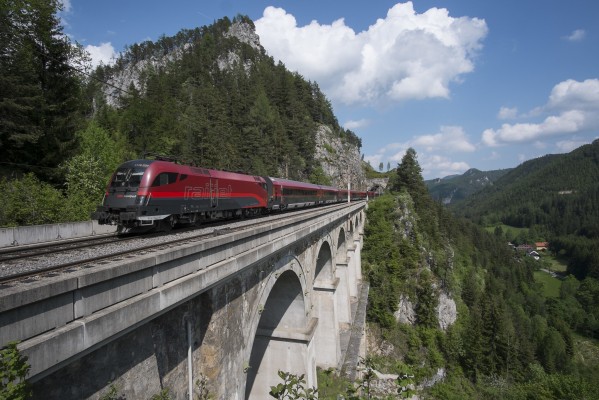
An afternoon Railjet passenger train bound for Graz crosses Krauselklause Viaduct above Breitenstein.
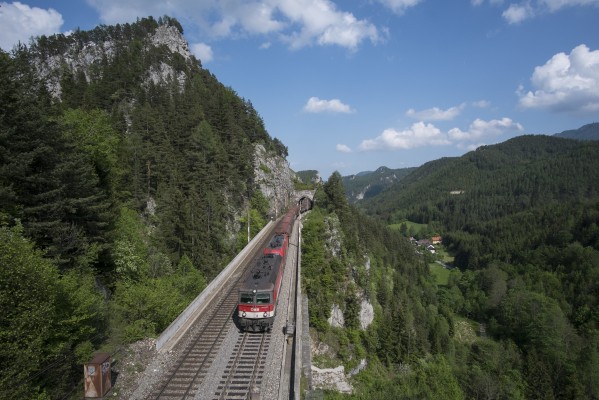
Southbound freight train led by a Class 1144 headend helper on Krauselklause Viaduct at Breitenstein. The viaduct, built by hand in the early 1850s, has two levels of arches: three arches on lower level with six arches above.
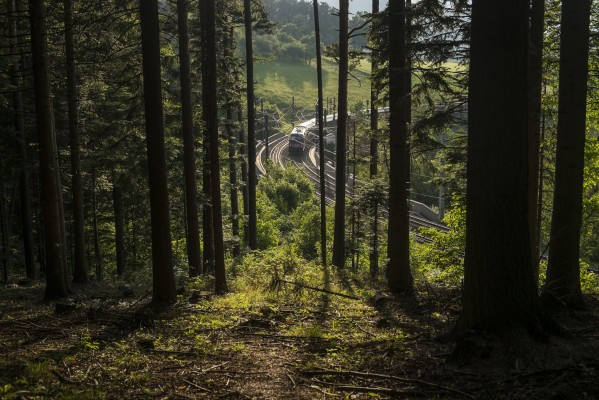
A southward RailJet climbs the grade near Eichberg as evening sun streams into the pine forest.
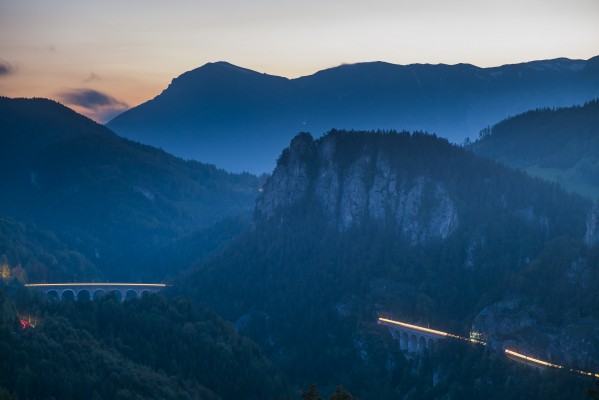
The 20-schilling view at dusk, as northbound freight train rolls downgrade.
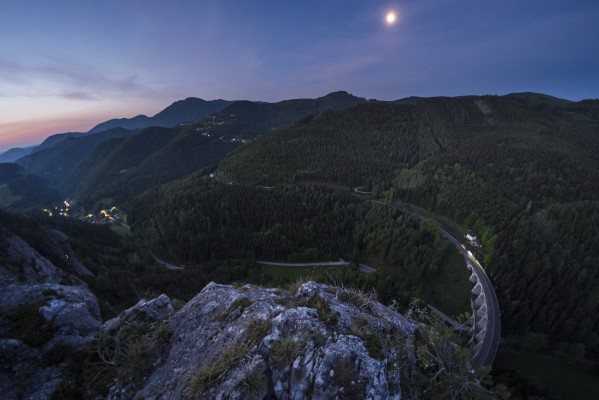
A waning moon hangs in the predawn sky above Breitenstein as a northbound freight train rolls onto the Kalte Rinne Viaduct. At far left, a green signal beckons the train onward, beneath the lights of the village.
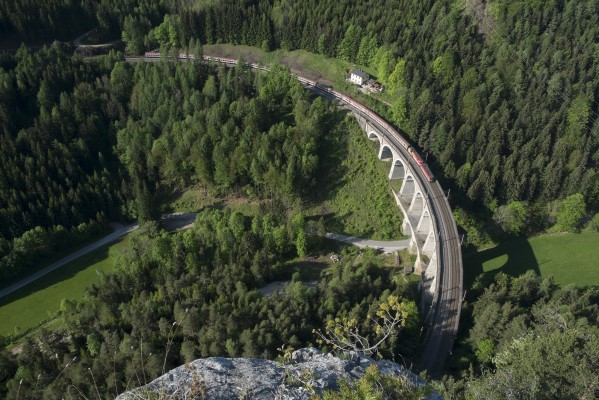
Northbound EuroNight sleeper train from Italy crossing Kalte Rinne Viaduct on a sunny morning.

Vienna-bound Railjet passenger train rolling downgrade near Klamm; the 12th-century castle is visible in the distance near the center of the image. Railjet trains are configured for bidirectional operation; the locomotive is at the rear of this train.
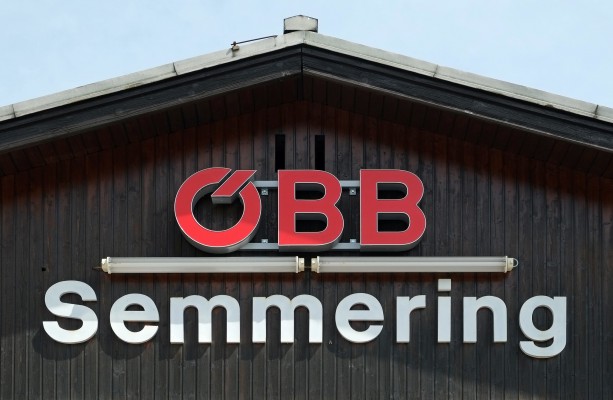
Austrian Federal Railway sign at Semmering Station.
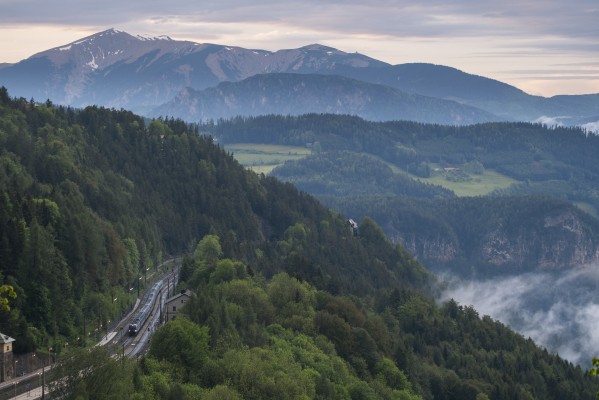
Mist hangs in the valleys after an evening thunderstorm at Semmering, as a southbound Railjet nears the summit tunnel. In the background is the 6,811-foot Schneeberg, the highest mountain in Lower Austria.
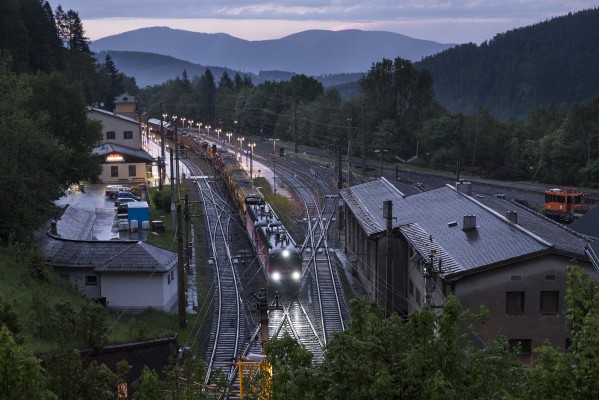
A pair of Class 1144 electrics leads a freight train through a light drizzle and into the summit tunnel at Semmering as twilight falls on a stormy day.
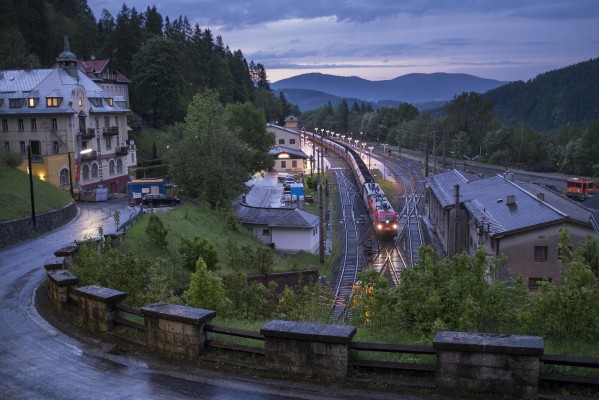
At twilight of a stormy day, a southbound freight train has nearly finished its climb up from Vienna and is about to enter the 4,695-foot-long Semmering Tunnel at the resort town of Semmering.
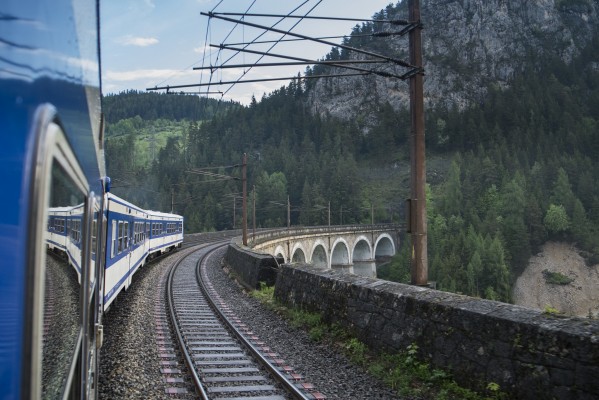
Looking out the window of an early-morning local train crossing Kalte Rinne Viaduct before sunrise.
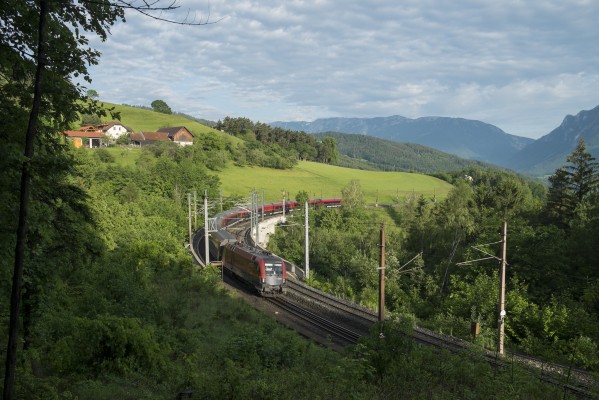
The day’s first Railjet passenger train, no. 551 for Graz, heads upgrade through rolling farmland near Eichberg as clouds scatter.
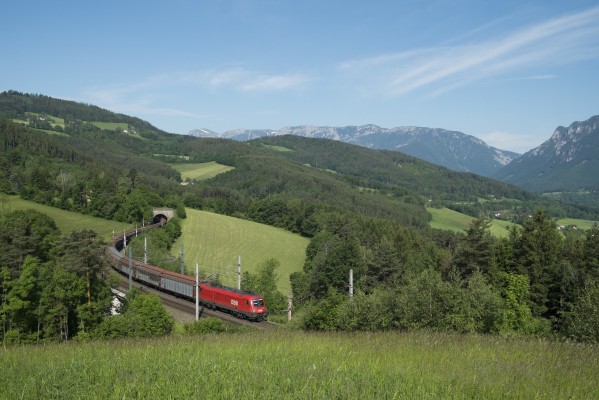
Southbound freight train climbing the 2.5-percent grade near Eichberg, through the foothills just south of the Schwarza River. Payerbach, shown in the opposite photograph, is in the notch in the valley at far right in this view. While most freight trains on the Semmering have two or three locomotives, a single EuroSprinter (Seimens, 8,600 horsepower) is adequate for this lightweight train of empty boxcars.
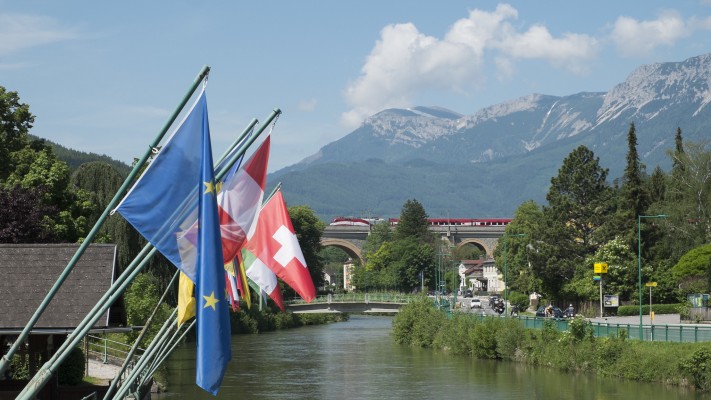
Railjet passenger train from Vienna to Graz crossing the Schwarza River in Payerbach. The Semmering Railway follows the Schwarza from Wiener Neustadt (twenty-five miles south of Vienna) to Payerbach, where the line crosses the river and doubles back on itself via this curved viaduct to continue climbing into the foothills of the Eastern Alps. Railjet trains make seven daily roundtrips between Vienna and Graz, Austria's two largest cities, covering the 125-mile journey in 2.5 hours.
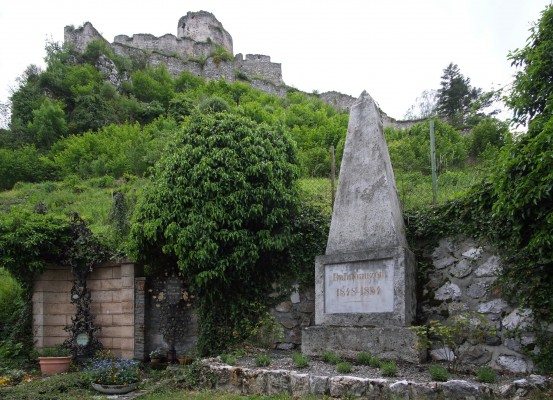
Some 20,000 labors built the Semmering Railway by hand from 1848 to 1854. More than 1,000 of them died in the difficult working conditions. This obelisk in the churchyard below Castle Klamm commemorates their sacrifice.
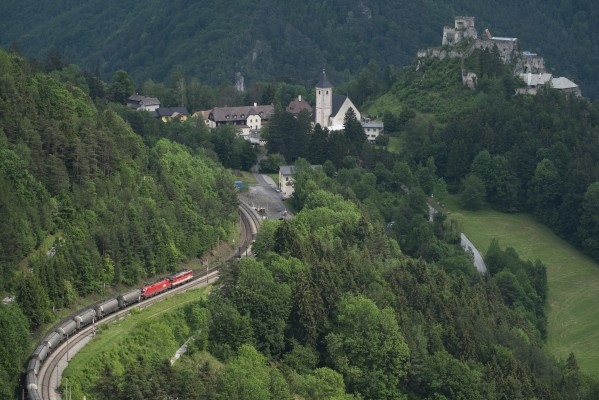
Northbound freight train winding downgrade at Klamm, passing the Catholic church and ruins of Castle Klamm, which dates from the 13th century. The cemetery in the churchyard includes an obelisk monument for the workers who died building the Semmering Railway, estimated at 1,000 men.
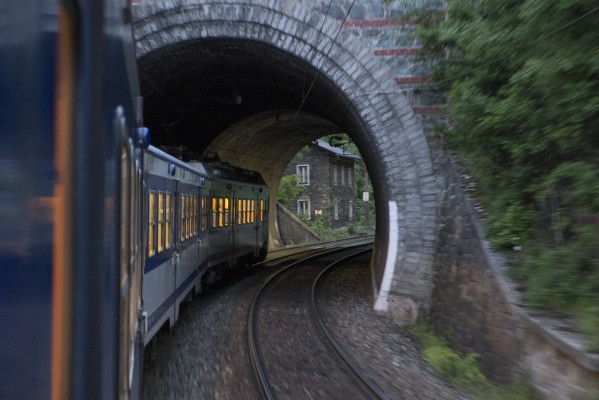
The opened window of the day’s last southbound local passenger train offers this view a typical stone-faced tunnel portal and stone lineman’s house on the the Semmering Railway.
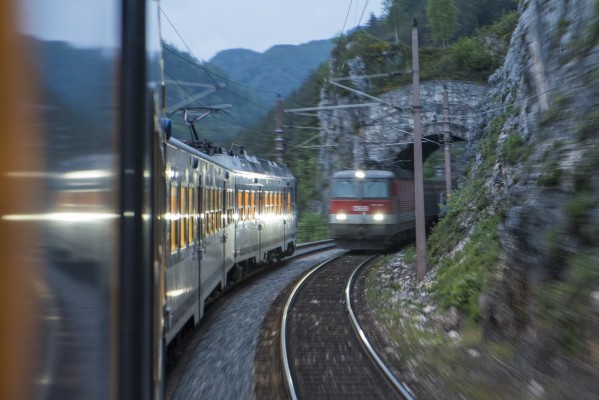
Northbound freight train meeting a southbound local passenger train at twilight just outside of the 46-foot-long Krauselklause Tunnel at Breitenstein.